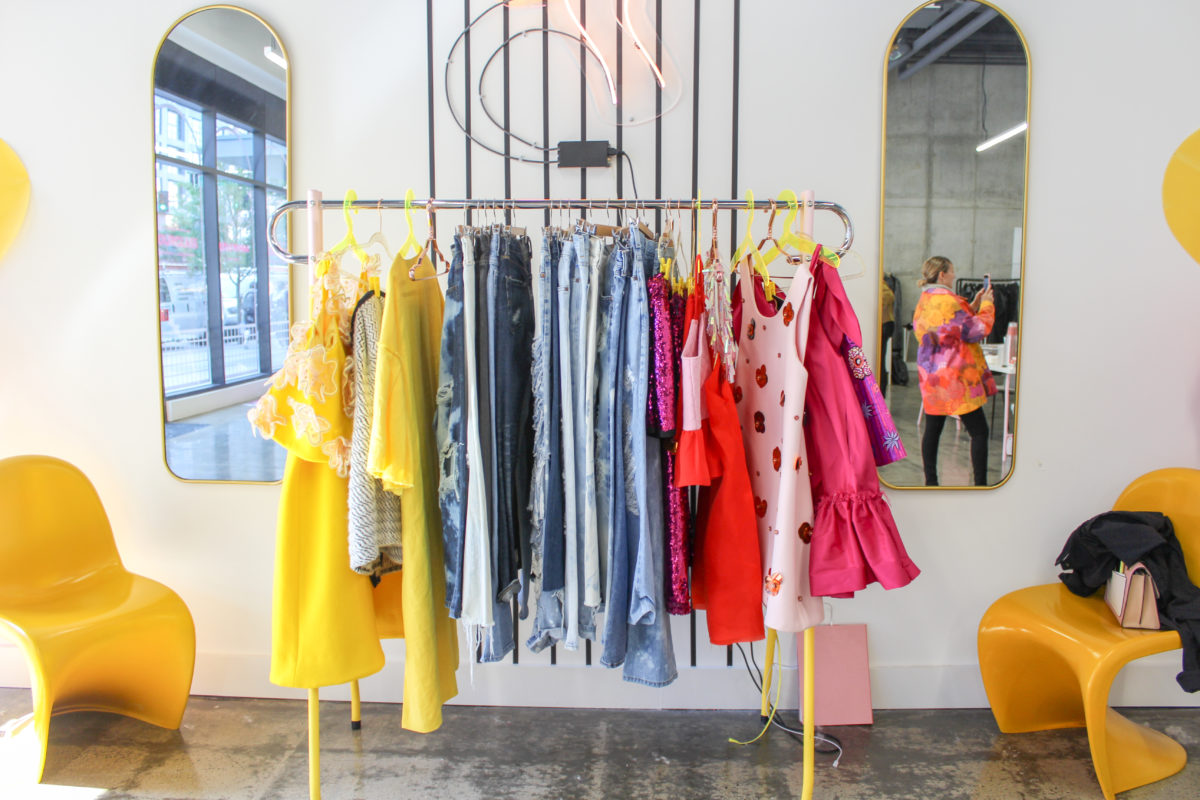
This weekend was the last weekend of popup boutique and content studio Hourglass Boston. The studio was created by powerhouse duo, Erin Robertson, winner of project runway, and Nicole Fichera, interior design extraordinaire. Inspired by places like Museum of Ice Cream which are made to Instagram, the women wanted to make a space where creatives could shop and shoot.
 More and more shopping, eating, and travel decisions are made based on aesthetics and photography-ability. I think Fichera and Robertson were on the right track in creating a space that inspires people. The team also hosted events like workshops and dinners, and shoots with their in-house photographer. Robertson’s designs were on view for customers to try on, snap pictures in, and, of course, purchase.
More and more shopping, eating, and travel decisions are made based on aesthetics and photography-ability. I think Fichera and Robertson were on the right track in creating a space that inspires people. The team also hosted events like workshops and dinners, and shoots with their in-house photographer. Robertson’s designs were on view for customers to try on, snap pictures in, and, of course, purchase.
 Projects like this also bring up the question, where is the line between Instagram fodder and true art? Or is there one? Does it count as art if the installation is made for social media (beyond a social experiment)? In many ways Instagram has given artists a free platform to publicize their work, and has inspired many to pursue aesthetic passions. But in the same, if not greater, numbers it has developed a creative homogeny, especially in the blogging world.
Projects like this also bring up the question, where is the line between Instagram fodder and true art? Or is there one? Does it count as art if the installation is made for social media (beyond a social experiment)? In many ways Instagram has given artists a free platform to publicize their work, and has inspired many to pursue aesthetic passions. But in the same, if not greater, numbers it has developed a creative homogeny, especially in the blogging world.
 I’m in no way exempt from this. I perpetuate the cycle as much as anyone. I go to all the hot Instagram spots, I take all the cliched photos. And it’s this mass production of similar content that I participate in that makes me think there is a line between art and Instagram. Art can be on Instagram but Instagram worlds are not necessarily art.
I’m in no way exempt from this. I perpetuate the cycle as much as anyone. I go to all the hot Instagram spots, I take all the cliched photos. And it’s this mass production of similar content that I participate in that makes me think there is a line between art and Instagram. Art can be on Instagram but Instagram worlds are not necessarily art.
 Either way, as a content producer it was wonderful to have a space like this available. Shooting is expensive and challenging and requires a significant investment in equipment and props. Even then, without access to a proper space the resulting photos might not come out. I can see studios like Hourglass becoming more popular, in fact the team is planning another popup in the future.
Either way, as a content producer it was wonderful to have a space like this available. Shooting is expensive and challenging and requires a significant investment in equipment and props. Even then, without access to a proper space the resulting photos might not come out. I can see studios like Hourglass becoming more popular, in fact the team is planning another popup in the future.
 But I hope an eye is turned to keeping these projects grounded in true artistic origins. For example, having Robertson’s original designs in the studio, and displaying local artists and authors in the props.
But I hope an eye is turned to keeping these projects grounded in true artistic origins. For example, having Robertson’s original designs in the studio, and displaying local artists and authors in the props.